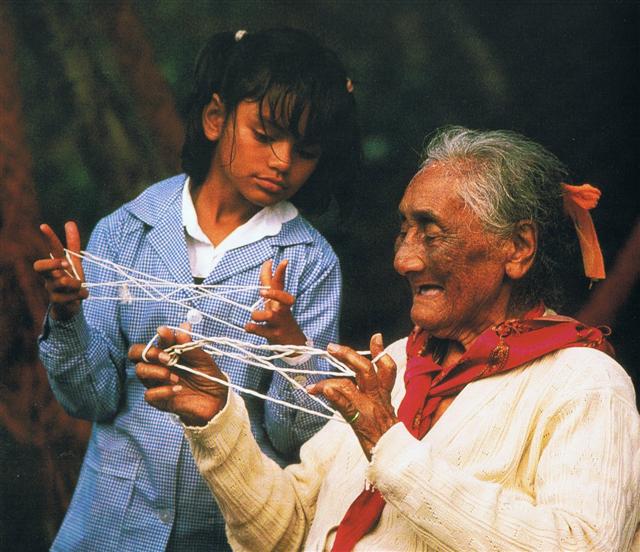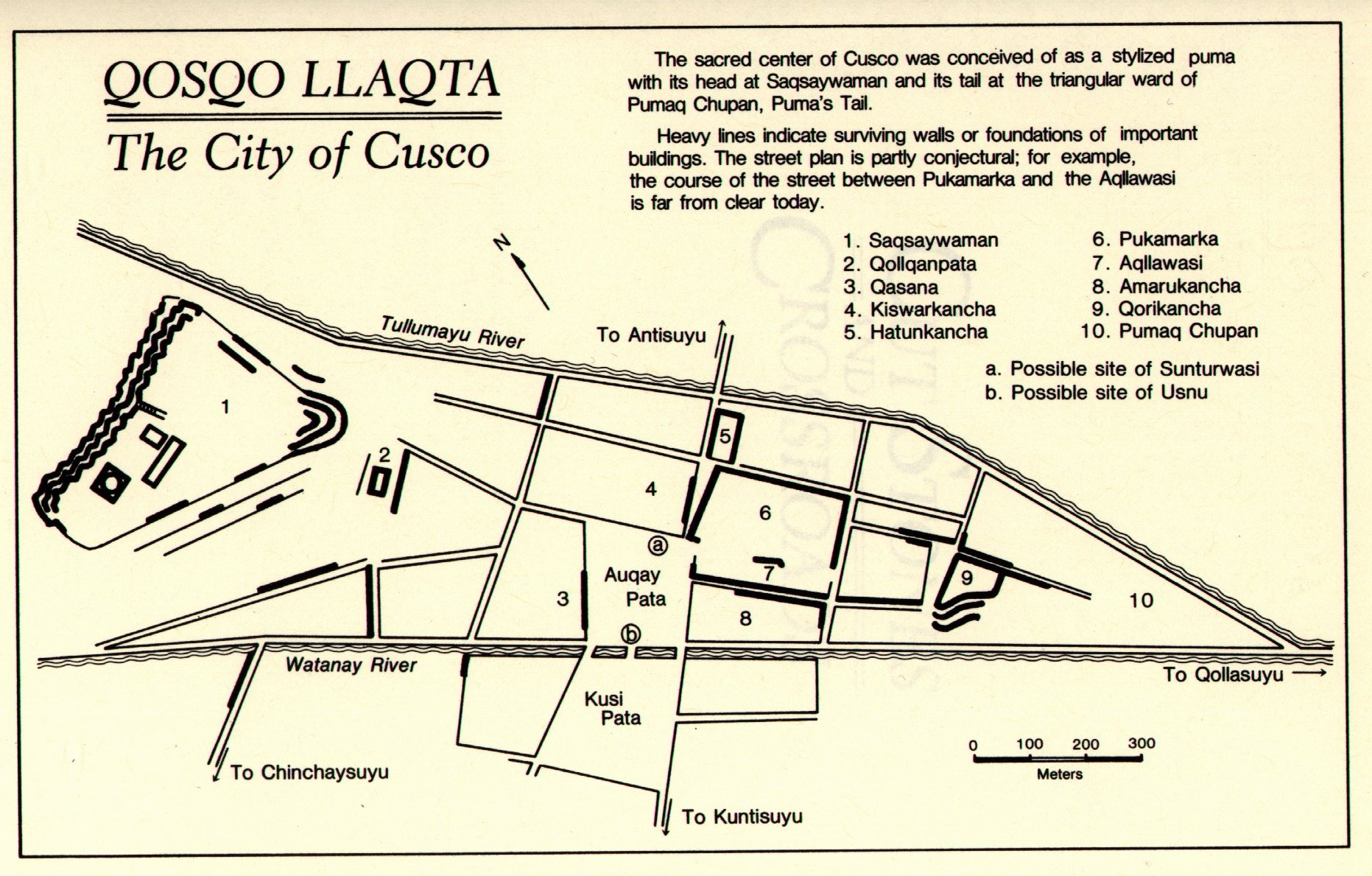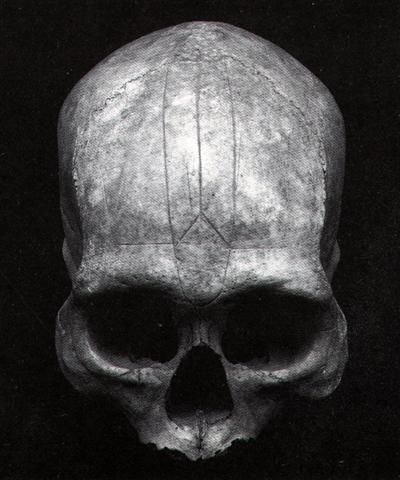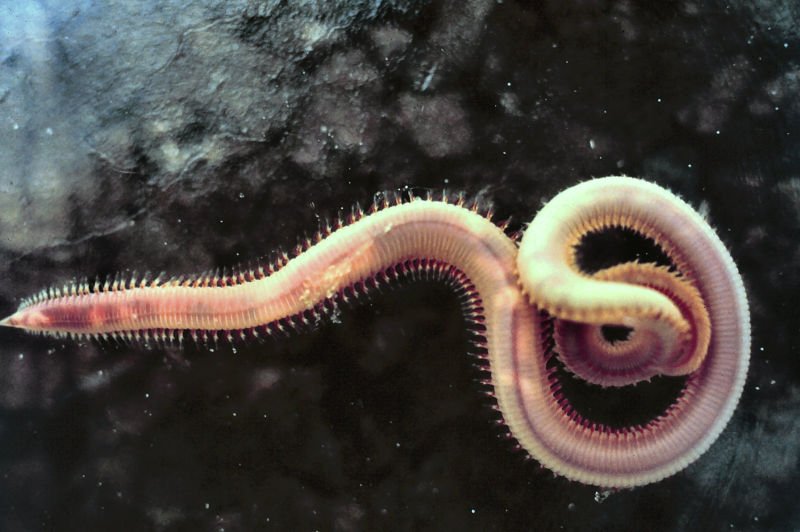19. There was a
pair of heads (nuts) growing at the beginning of line
Ca4:
|
no
glyph |
 |
 |
 |
 |
 |
 |
|
Ca1-1 |
Ca1-2 |
Ca1-3 |
Ca1-4 |
Ca1-5 |
Ca1-6 |
|
koia |
ki te hoea |
ki te henua |
te rima te hau tea |
haga i te mea ke |
ki te henua - tagata honui |
|
CLOSE TO THE SUN: |
|
ALCHITA
= α Corvi,
MINKAR (Beak)
= ε Corvi |
PÁLIDA (Pale)
= δ
Crucis |
GIENAH (Wing)
= γ
Corvi, ζ Crucis |
CHANG SHA (Long Sand-bank)
= ζ Corvi |
INTROMETIDA
= ε Crucis,
ACRUX
= α Crucis |
ALGORAB
= δ Corvi,
GACRUX
= γ Crucis |
AVIS
SATYRA
= η
Corvi,
KRAZ
= β Corvi |
|
September 20 |
21 |
EQUINOX |
23
(266) |
JULY 22 (π) |
25 (*5 + 183) |
26 |
|
CLOSE TO THE FULL MOON: |
|
SIRRAH (α) |
|
|
|
|
ANKAA (α) |
|
|
March 21 (0h) |
22 |
23 |
24
(83) |
JULIAN EQUINOX |
26
(*5) |
27 |
|
68 |
 |
 |
4 |
 |
|
Ca4-1 |
Ca4-2 (78) |
Ca4-7 (83) |
|
kua tupu te rakau |
kua tupu - te kihikihi |
e gagata hakaariki |
|
RAS
ALGETHI (*260) |
*261
= 9 * 29 |
RAS
ALHAGUE (*266) |
|
December 6 (340)
OCTOBER 3 (276) |
|
December 12 (346)
OCTOBER 9 (282) |
|
μ
LEPORIS |
*78
= 6 * 13 |
HEKA
(*83) |
The year was not a
single unit but consisted of a pair ('twins'), which
should be 'recycled' together.
... In
north Asia the common mode of reckoning is in half-year,
which are not to be regarded as such but form each one
separately the highest unit of time: our informants term
them 'winter year' and 'summer year'. Among the Tunguses
the former comprises 6½ months, the latter 5, but the
year is said to have 13 months; in Kamchatka each
contains six months, the winter year beginning in
November, the summer year in May; the Gilyaks on the
other hand give five months to summer and seven to
winter. The Yeneseisk Ostiaks reckon and name only the
seven winter months, and not the summer months.
This mode
of reckoning seems to be a peculiarity of the far north:
the Icelanders reckoned in misseri, half-years,
not in whole years, and the rune-staves divide the year
into a summer and a winter half, beginning on April 14
and October 14 respectively. But in Germany too, when it
was desired to denote the whole year, the combined
phrase 'winter and summer' was employed, or else
equivalent concrete expressions such as 'in bareness and
in leaf', 'in straw and in grass' ...
...
The palolo worm or Samoan palolo worm (Palola
viridis) is a species of invertebrate in the
Eunicidae family ...
... In Samoa one authority
gives the wet season, ending in April, and the dry
season, which comes to an end with the palolo
fishing in October; another vaipalolo the
palolo or wet season from October to March, and
toe lau, when the regular trade-winds blow,
embracing the other months; a third the season of fine
weather - in which however much rain falls in some
localities - and the stormy season, when it rains
heavily ...
|
Samoa |
April - September |
dry season |
toe lau |
|
October - March |
wet season |
palolo |
2 * 29 = 58 days before Ras Algethi there was
another pair:
 |
 |
56 |
 |
 |
4 |
 |
|
Ca1-19 |
Ca1-20 |
Ca4-1 (77) |
Ca4-2 |
Ca4-7 (83) |
|
te maitaki - te kihikihi |
hakaraoa - te
henua |
kua tupu te rakau |
kua tupu - te kihikihi |
e gagata hakaariki |
|
October 9 (282)
AUGUST 6 (218) |
|
December 6 (340)
OCTOBER 3 (276) |
|
December 12 (346)
OCTOBER 9 (282) |
|
SPICA (*202) |
|
RAS
ALGETHI |
*261
(= 9 * 29) |
RAS
ALHAGUE (*266) |
|
58 =
2 * 29 |
6 |
|
64 |
There were 'berries' at Ca1-19 but
none in Ca1-20 and a 'season in straw' could
have begun here. The broad daylight created by the Sun
was followed by the strings of winter.
... string
games could be resumed after it was clear that the Sun
had managed to leave the horizon and was rapidly gaining
in altitude: 'Before the sun starts to leave the horizon
... when it shows only on the horizon, ... then string
games were no longer allowed as they might lacerate the
sun. Once the sun had started to go higher and could be
seen in its entirety, string games could be resumed, if
one so wished. So the restriction on playing string
games was only applicable during the period between the
sun's return and its rising fully above the horizon
...

At Virgo the Sun was quickly running downwards.
Denebola (the Tail of the Lion) was where Virgo began:


At this time of the year, south of the equator,
the Sun in form of Rehua was returning from his
winter maid in the north, and in due time the Uru
(Breadfruit Tree) would bear much fruit:
...
Antares, visible in the morning sky of December-January,
came to stand for summer heat; hence the saying, 'Rehua
cooks (ripens) all fruit'. The generally accepted
version of the Rehua myth, according to Best, is
that Rehua had two wives, the stars on either
side of Antares. One was Ruhi-te-rangi or
Pekehawani, the personification of summer languor (ruhi),
the other Whaka-onge-kai,
She-who-makes-food-scarce before the new crops can be
harvested ...
... In Tahiti the
bread-fruit can be gathered for seven months, for the
other five there is none: for about two months before
and after the southern solstice it is very
scarce, but from March to August exceedingly plentiful.
This season is called pa-uru (uru =
'bread-fruit'). The recurring scarcity of bread-fruit
shewed the changes in the course of the year, but the
Pleiades afforded a surer limit ...
|
Tahiti |
March - August |
6 months |
pa-uru |
|
September - February |
6 months |
? |
...
According to an etiological Hawaiian myth, the
breadfruit originated from the sacrifice of the
war god Ku. After deciding to live
secretly among mortals as a farmer, Ku
married and had children. He and his family
lived happily until a famine seized their
island. When he could no longer bear to watch
his children suffer, Ku told his wife
that he could deliver them from starvation, but
to do so he would have to leave them.
Reluctantly, she agreed, and at her word, Ku
descended into the ground right where he had
stood until only the top of his head was
visible. His family waited around the spot he
had last been, day and night watering it with
their tears until suddenly a small green shoot
appeared where Ku had stood. Quickly, the
shoot grew into a tall and leafy tree that was
laden with heavy breadfruits that Ku's
family and neighbours gratefully ate, joyfully
saved from starvation ...

... In many Polynesian cultures the bodies
of gods were conceived of as covered with
feathers and they were frequently associated
with birds: in Tahiti and the Society
Islands, bird calls on the marae
signaled the presence of the gods. Hawaiian
feathered god figures generally depict only
the head and neck of the
god ...
The glyph type hua poporo
was used at Spica (Ana-roto, the Middle
Pillar):
 |
 |
|
hua poporo |
SPICA |
... The
plant is - according to bishop Jaussen's
documentation of what Metoro Tau'a Ure
told him - a species of the family of plants
named Solanum. Barthel suggested the
species to be Solanum nigrum. As
nigrum means black, the glyph perhaps
signified 'black'. Poporo was used for
obtaining colour for tattooing ...
... Barthel informs us that the
Maori singers in New Zealand, where the
breadfruit did not grow, 'translated' kuru
(= breadfruit) in the old songs - from the times
when their forefathers lived in a warmer climate
- into poporo.
He points out that in the Marquesas they
counted the fruits from the breadfruit trees in
fours, perhaps thereby explaining the four
'berries' in this type of glyph. The breadfruit
did not grow on Easter Island but the berries of
Solanum nigrum were eaten in times of
famine. Barthel compares with the word koporo
on Mangareva. The poor crop of breadfruits at
the end of the harvest season was called
mei-koporo, where mei stood for
breadfruit. On other islands breadfruit was
called kuru, except in the Marquesas
which also used the word mei. Koporo
was a species of nightshade ...
|
Po
1. Night; to get dark, to
fall (of night): he-po, it is
getting dark. Formerly used, with or
without raá, in the meaning of a
whole day: po tahi, one day;
katahi te kauatu marima po, fifteen
days; po tahi raá, first day of
the week; po rua raá, po toru raá,
second, third day, etc. 2. Alone or
as po nui, used to express the
idea of good luck, happiness.
He-avai-atu au to'ou po, I wish you
good luck (when taking leave of
someone). Very common was this parting
formula: aná po noho ki a koe!
good luck to you! Po-á, morning;
i te po-á, in the morning; i
te po-era-á, very early in the
morning. Po-ará, quickly,
rapidly, swiftly: he-iri po-ará,
go up quick; he-ta'o itau umu era
po-ará, he cooked it quickly.
Po-e-mahina, formerly used of
sleep-walkers (haha a po).
Vanaga.
1. Darkness, night,
late; po haha, dark night, gloom.
P Tu. po-tagotago, darkness.
Mgv., Mq., Ta.: po, darkness,
night. 2. Calendar day; po e rua,
Tuesday; po o te tagata, life. P
Pau., Mgv., Mq., Ta.: po,
calendar day. Churchill. |
|
Poro To chip
(vt), to nick, to notch; chips, nicks,
dents, splits, gaps, breaks; hoe
poro, broken knife, with nicks;
poroporo, blunt; poroporo hata,
nicks or notches on the edge of
something. Vanaga. To notch. PS Sa.:
polo, to cut up, to carve.
Porohata, to
sink into ruin, to crumble; poroieko,
to slip, to slide. Churchill. Pau.:
Poro, to proclaim, to call by name.
Mgv.: poro, to call, to name.
Ta.: poro, to cry, to proclaim.
Churchill.
Mgv.: Pororo,
the July season when the leaves fall.
Mq.: pororo, dry, arid. Sa.:
palolo-mua, July. Ma.: paroro,
cloudy weather. Churchill. |
At Ca1-2
Metoro said ki te hoea, which ought to refer
to a place where tattooing instruments (hoea)
were used, the implication
being a movement down towards the Underworld:
...
He continued travelling until he reached the
house of Uetonga, whose name all men
know: he was the tattoo expert of the world
below, and the origin and source of all the
tattoo designs in this world.
Uetonga was at work tattooing the face of a
chief. This chief was lying on the ground with
his hands clenched and his toes twitching while
the father of Niwareka worked at his face
with a bone of many sharpened points, and
Mataora was greatly surprised to see that
blood was flowing from the cheeks of that chief.
Mataora had his own moko, it was
done here in the world above, but it was painted
on with ochre and blue clay. Mataora had
not seen such moko as Uetonga was
making, and he said to him, 'You are doing that
in the wrong way, O old one. We do not do it
thus.'
'Quite so,' replied Uetonga, 'you do not
do it thus. But yours is the way that is wrong.
What you do above there is tuhi, it is
only fit for wood. You see,' he said, putting
forth his hand to Mataora's cheek, 'it
will rub off.' And Uetonga smeared
Mataora's make-up with his fingers and
spoiled its appearance. And all the people
sitting round them laughed, and Uetonga
with them ...

|
Uru
Uru.
1. To lavish food on those who have
contributed to the funerary banquet (umu
pâpaku) for a family member (said of
the host, hoa pâpaku). 2. To
remove the stones which have been heated
in the umu, put meat, sweet
potatoes, etc., on top of the embers,
and cover it with those same stones
while red-hot. 3. The wooden tongs used
for handling the red-hot stones of the
umu. 4. To enter into (kiroto
ki or just ki), e.g.
he-uru kiroto ki te hare, he-uru ki te
hare. 5. To get dressed: kahu uru.
Vanaga.
Uruga.
Prophetic vision. It is said that, not
long before the first missionaries'
coming a certain Rega Varevare a Te
Niu saw their arrival in a vision
and travelled all over the island to
tell it: He-oho-mai ko Rega Varevare
a Te Niu mai Poike, he mimiro i te po
ka-variró te kaiga he-kî i taana uruga,
he ragi: 'E-tomo te haûti i Tarakiu,
e-tomo te poepoe hiku regorego, e-tomo
te îka ariga koreva, e-tomo te poporo
haha, e-kiu te Atua i te ragi'. I te
otea o te rua raá he-tu'u-hakaou ki
Poike; i te ahi mo-kirokiro he-mate.
Rega Varevare, son of Te Niu,
came from Poike, and toured the
island proclaiming his vision: 'A wooden
house will arrive at Tarakiu
(near Vaihú), a barge will
arrive, animals will arrive with the
faces of eels (i.e. horses), golden
thistles will come, and the Lord will be
heard in heaven'. The next morning he
arrived back in Poike, and in the
evening when it was getting dark, he
died. Vanaga.
He ui a Ira.ko te
motu etoru.he ki a Ira.he ro korua e kau
a repa e ku ketu ana te urunga.a Hau
maka o to tatou matua.i hakahi mai ai
kia au.ko nga kope ririva tutuu vai a te
taanga.te ingoa o te motu ena etoru i
nape ai e te kuhane o Hau maka.
Ira saw that there were three such
islets. Ira said, 'Hey you, crew of
young men, the vision of Hau Maka, our
father, which he revealed to me, has
come true. There are 'the handsome sons
of Te Taanga, who are standing in the
water', for this is the name that the
dream soul of Hau Maka gave them. (E:17)
Uru manu.
Those who do not belong to the Miru
tribe and who, for that reason, are held
in lesser esteem.
Úru-úru.
To catch small fish to use as bait.
Uru-uru-hoa.
Intruder, freeloader (person who enters
someone else's house and eats food
reserved for another). Vanaga.
1. To enter, to
penetrate, to thread, to come into port
(huru); uru noa, to
enter deep. Hakauru, to thread,
to inclose, to admit, to drive in, to
graft, to introduce, penetrate, to
vaccinate, to recruit. Akauru, to
calk. Hakahuru, to set a tenon
into the mortise, to dowel.
Hakauruuru, to interlace;
hakauruuru mai te vae, to hurry to.
2. To clothe, to dress, to put on shoes,
a crown. Hakauru, to put on
shoes, to crown, to bend sails, a ring.
3. Festival, to feast. 4. To spread out
the stones of an oven. Uruuru, to
expand a green basket. 5. Manu uru,
kite. Uruga
(uru 1). Entrance. Churchill.
Ta.: uru, the
human skull. Mq.: uu, the head.
Sa.: ulu, id. Moriori: ulu,
id.
Uru, make even.
Kapingamarangi. |
|
...
When the man, Ulu
[Uru]
returned to his wife from his visit to
the temple at Puueo, he said, 'I
have heard the voice of the noble
Mo'o, and he has told me that
tonight, as soon as darkness draws over
the sea and the fires of the volcano
goddess, Pele, light the clouds
over the crater of Mount
Kilauea, the black cloth will
cover my head. And when the breath has
gone from my body and my spirit has
departed to the realms of the dead, you
are to bury my head carefully near our
spring of running water. Plant my heart
and entrails near the door of the house.
My feet, legs, and arms, hide in the
same manner. Then lie down upon the
couch where the two of us have reposed
so often, listen carefully throughout
the night, and do not go forth before
the sun has reddened the morning sky.
If, in the silence of the night, you
should hear noises as of falling leaves
and flowers, and afterward as of heavy
fruit dropping to the ground, you will
know that my prayer has been granted:
the life of our little boy will be
saved.' And having said that, Ulu
fell on his face and died.
His wife sang a dirge of
lament, but did precisely as she was
told, and in the morning she found her
house surrounded by a perfect thicket of
vegetation. 'Before the door,' we are
told in Thomas Thrum's rendition of the
legend, 'on the very spot where she had
buried her husband's heart, there grew a
stately tree covered over with broad,
green leaves dripping with dew and
shining in the early sunlight, while on
the grass lay the ripe, round fruit,
where it had fallen from the branches
above. And this tree she called Ulu
(breadfruit) in honor of her
husband.
The little spring was
concealed by a succulent growth of
strange plants, bearing gigantic leaves
and pendant clusters of long yellow
fruit, which she named bananas. The
intervening space was filled with a
luxuriant growth of slender stems and
twining vines, of which she called the
former sugar-cane and the latter yams;
while all around the house were growing
little shrubs and esculent roots, to
each one of which she gave an
appropriate name. Then summoning her
little boy, she bade him gather the
breadfruit and bananas, and, reserving
the largest and best for the gods,
roasted the remainder in the hot coals,
telling him that in the future this
should be his food. With the first
mouthful, health returned to the body of
the child, and from that time he grew in
strength and stature until he attained
to the fullness of perfect manhood.
He became a mighty warrior in those
days, and was known throughout all the
island, so that when he died, his name,
Mokuola
[Living Islet], was given
to the islet in the bay of Hilo
where his bones were buried; by which
name it is called even to the present
time
... |

|
















